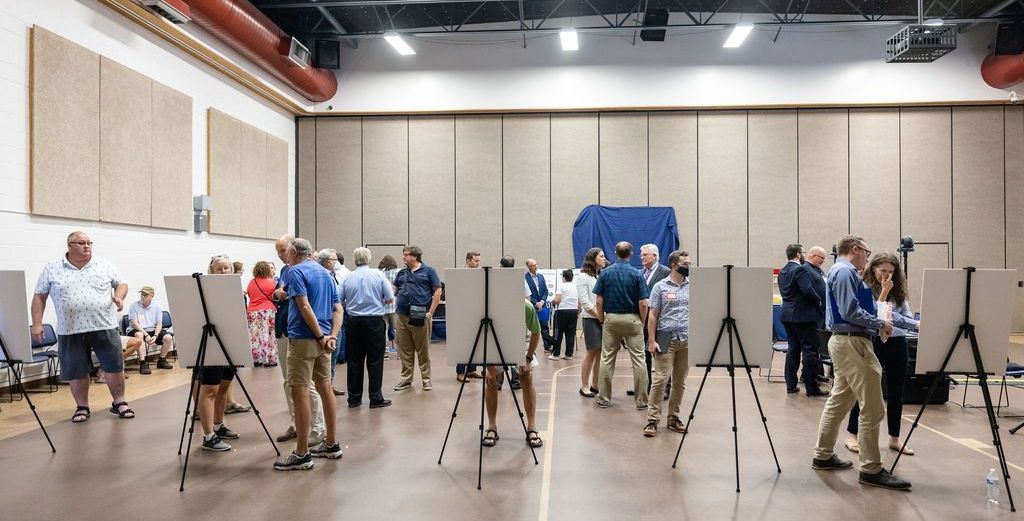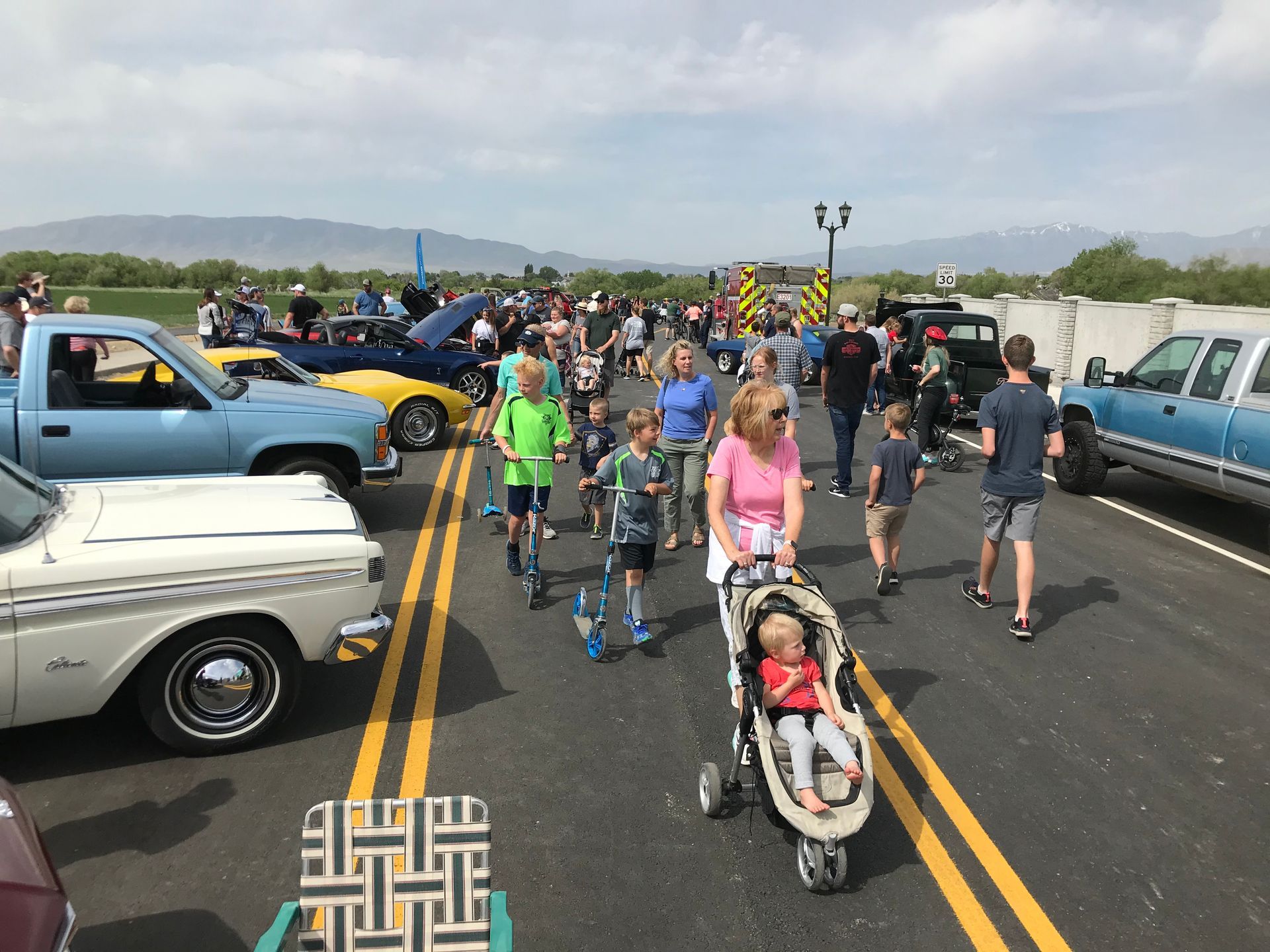Consultants in public engagement and involvement build trust between various organizations and Utah residents. By Taylor Larsen
Client Side
Clients come in many different forms. City governments, transportation agencies, regional planning bodies, and others all need to put in the work to inform their audiences about changes taking place—namely ongoing development of the state in both land use and transportation.
Geoff Dupaix is a part of a client organization as the Region Three Senior Communications Manager for the Utah Department of Transportation (UDOT). Plainly stated, the work done by UDOT and consultants communicates “what is being done, why it is needed, how they will be affected, and when,” he said.
It’s a collaborative approach where UDOT’s specific work improves, Dupaix said, with involvement from metropolitan planning organizations (MPOs). These organizations locally consist of the Wasatch Front Regional Council, Mountainland Association of Governments, Dixie MPO, and Cache MPO, each responsible for planning certain areas within their respective geographies and interfacing with the public.
Because MPOs are more dialed in with municipal master plans as well as immediate and ongoing transportation needs, UDOT and MPOs come together to “collaborate and prioritize for what is needed and when,” Dupaix said. “We wouldn’t be nearly as successful if it wasn’t for our consultation professionals who share our same values.”
Utilizing Various Tools
Those values—transparency and accountability—are outlined in every public information officer’s guide, the International Association of Public Participation (IAP2) Spectrum of Public Participation.
The single-page document gives guidelines on the public’s overall impact on the decision-making process—from simply being informed by public involvement professionals on what is happening around them to being empowered to act, where organizations implement what the public decides. Within that spectrum, public information officials establish goals and promises to the public while determining the extent of the public’s engagement with a project.
It helps people like Katie Kourianos choose from the toolbox of involvement efforts. Her work as the Public Involvement Manager for Horrocks Engineers involves using any available tools to reach the target audience. Canvassing door to door, holding traditional public meetings, and setting up a table at a farmers market or neighborhood festivals have all helped her clients reach as many people as possible.
“We’ve learned a lot and have become more sophisticated,” she said of her 10 years in the industry watching her field embrace technology. One specific project for Kourianos stands out: I-15 Tech Corridor in Lehi. After researching the area and working with local businesses and employees, she said the response from everyone was, “Get on Twitter.”
The entire effort to research the communication strategy and then implement updates via social media was a success, she said, and it was one of Horrocks’ most robust research and implantation efforts. Reaching the right audience in droves—all in the way the target audience consumes information—was a great solution.
However, each of those interviewed stated that these efforts are not a one-size-fits-all. Technology is important, but the localized partnerships are where the magic happens. Kourianos mentioned bringing the public engagement team to a “Yappy Hour” get together for dogs and their owners in Salt Lake parks over a summer as one of those rewarding efforts.
“In person, in the neighborhood, where we are a community partner—that’s where we are the most successful,” Kourianos said.

Working with a Dynamic Public
The overall practice is quite dynamic, according to those interviewed. There are plenty of ways to effectively engage with the public, and these professionals must be on their toes to make sure everyone is given the correct information in the correct context.
The best way it happens, Xochimitl said, is by communicating “proactively and transparently to the right audiences at the right time.” That transparency comes from informing and showcasing decision-making processes to the public, communicating how their investments will appear in the future as a public good.
Xochimitl and her team are currently working for the Point of the Mountain State Land Authority and witness the need for dynamic public involvement firsthand.
“We understand that we’re trusted stewards of the taxpayers’ investment at the point,” said Xochimitl. “Of course we want to plan ahead, but we want to remain flexible and agile to changing conditions.”
She said that the visioning process for The Point began in 2016 with many residents welcoming growth as a means for additional economic opportunities. But now, with externalities like traffic congestion, housing affordability, and air quality at the forefront of Utahn’s minds, she and her clients are looking to stay ahead of public opinion as it priorities shift.
The development won’t solve all the previously mentioned issues, but it has the potential to do huge public good and be part of the solution to ongoing issues affecting Utah and its residents.
After all, she said, “The Point is owned by all Utahns, so our team feels a weighty responsibility to ensure we are supporting our client in implementing what Utahns want at the site.”
As a public information professional, she continued, “It is incumbent upon my team of communicators to foster a two-way dialogue with the public so our client can iterate and refine their work based on sound engagement practices and robust feedback.”
Public engagement and involvement has been a massive win for the project.
“We have seen overwhelming success in our public engagement and communications work on The Point. We have engaged over 12,000 Utahns during the visioning and planning processes, and garnered significant positive media coverage across nearly every news outlet in the state,” she said. “Our greatest success is seeing how Utahns have trusted the process and welcomed the project because of the [Point of the Mountain] Land Authority’s commitment to meaningfully engage the public every step of the way.”
Why is it Important?
All of this work—on Point of the Mountain, during Yappy Hour at the park, or even meeting with a person in their living room to explain ongoing road construction—is to showcase that these public entities are on the same team as residents. Dupaix emphasized this, that their work develops confidence that entities likeUDOT, city governments, MPOs, and more can rightfully be trusted to do beneficial work for this Beehive State.
"We have to be trying to earn public trust every day,” he said. “It builds a lot of credibility that we will do what we say we’re going to do. And we’re okay being held accountable.”
As engagement has grown, these professionals are keeping up. Online public hearings, text alerts, and even setting up a booth in a grocery store parking lot all goes toward involving the public in the decision-making process.
“We’re seeing lots of great feedback. We’re figuring out what works and what doesn’t,” said Kourianos. “It’s a great thing that people want to be at the table and have their voice heard.”
Bringing more people to the decision-making table, keeping them informed, showcasing that public officials and organizations are listening and implementing what Utahns want“that’s the power of communications,” said Xochimitl. “That’s why I love what I do. It has an enduring impact on the community.”
She said it is cliché, but government that governs closest to the people governs best.
“It’s the ‘Utah Way,’” she said of the collaborative environment in the Beehive State. “It’s our fry sauce.
































